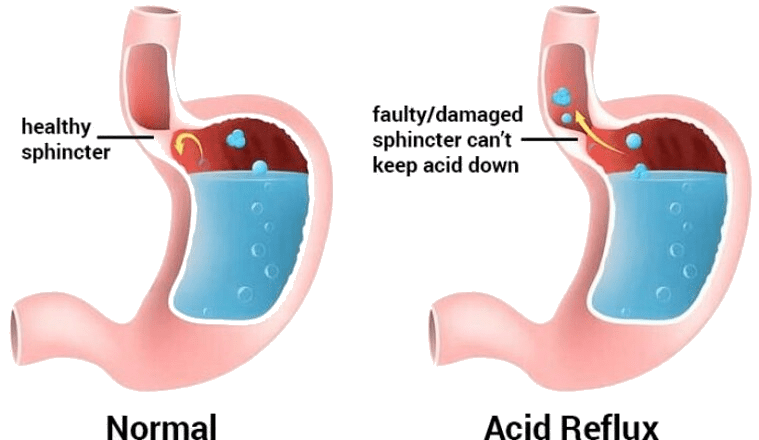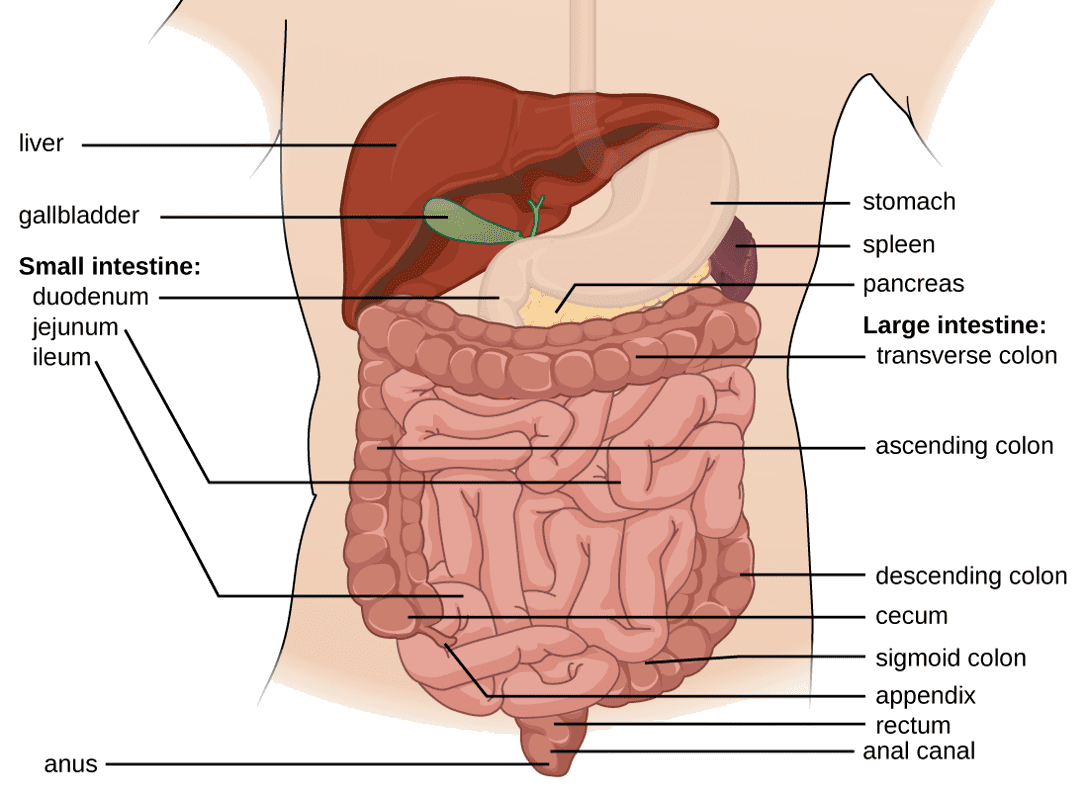Introduction
Food is necessary for us to get the raw materials and energy needed to carry out metabolic activities. The efficient digestion and absorption of the food ensure the proper assimilation of its nutrients. Only when the digestive system is operating effectively does proper digestion and absorption take place. The digestive tract will be in good health if you eat enough nutritious food and lead a healthy lifestyle. Poor eating habits can cause digestive system abnormalities and several related health problems. Acidity is the most frequent of all digestive system problems and is related to several risk factors if not treated promptly.
Significance of the Human Digestive System
The alimentary canal and auxiliary digestive organs such as the liver, pancreas, and salivary glands make up the human digestive system. The following list highlights the relevance of this system, which guarantees the effective use of food consumed:
- The digestive system carries out digestion, or the breakdown of large molecules into smaller, simpler molecules that can be easily absorbed.
- It makes sure that any disease or dangerous substance that enters through the mouth is eliminated before it has a chance to spread to other organs.
- It guarantees appropriate secretion of digestive fluid and a suitable environment for this fluid to interact with the food.
- The components of the digestive system are also designed to absorb the material that has been digested and add it to the fluid that circulates to carry it to the cells where it is required.
A common mistake students make is memorising Science or a process without understanding the concept behind it. Check out online study options are a great way to clear the science concepts you need. Watch the related video of these Online Science tuitions For Class 7 Lesson no- 2.
Common Disorders of the Human Digestive System
| Disorders | Symptoms and causes |
| Lactose intolerance | Consuming dairy products causes bloating gas and diarrhoea. A person with lactose intolerance is unable to effectively digest the lactose found in milk and other dairy products. |
| Gastroesophageal Reflux Disease (GERD) | Heartburn, chest pain, and difficulty swallowing are some of the main symptoms. GERD is brought on by the stomach’s contents often moving back into the tube connecting the mouth and stomach. |
| Irritable Bowel Syndrome (IBS) | IBS patients may endure cramps, flatulence, and severe stomach pain. IBS is a condition marked by aberrant colon muscle contractions. |
| Peptic ulcer | Abdominal discomfort is caused by wounds that form in the lining of the stomach, small intestine, and esophagus. These typically appear as a result of non-steroid anti-inflammatory drug use and inflammation brought on by Helicobacter pylori. |
| Chronic constipation | A person has less than three bowel movements per week, and they last for three weeks or longer. There are a variety of reasons why this happens, including dehydration, inadequate dietary fibre from foods like watery fruits, vegetables, and cereals, inactivity, a lack of exercise, and medication side effects. |

How to Prevent Different Disorders of the Digestive Tract?
| Disorders | Prevention |
| Lactose intolerance | Limit your consumption of dairy products and milk. Take vitamins to help the lactose digest. |
| GERD | Eat enough meals and prevent overindulging, give up smoking, and stop eating two to three hours before bed. |
| Irritable Bowel Syndrome | Reduce stress, drink enough fluids, and include plenty of fibre-rich foods in your diet, such as beans, fruits, and watery vegetables. |
| Peptic ulcer | Avoid using smoke and alcohol, and regularly wash your hands to prevent infections. |
| Chronic constipation | Consume foods high in fibre, exercise often, drink lots of water, and steer clear of undercooked or raw foods. |
Causes of Acidity
Acidity is the overproduction of gastric acid, which can be caused by a variety of things, including nutrition, eating habits, activity, and body type.
- Food: Prolonged eating of deep-fried foods might cause the stomach to produce too much acid. Lemon, grapefruit, and orange are citrus fruits that make the stomach’s already-acidic environment more acidic.
- Beverages: A drink containing caffeine, such as chocolate, tea, or coffee causes the stomach to produce acid and cause it to become acidic. A lot of alcohol consumption promotes acidity and irritates the lining of the stomach. Therefore, it is best to stop drinking alcohol.
- Obesity: Being overweight puts the abdomen under additional strain, which increases acidity.
- Medications: Heartburn can be brought on by certain medicines, antibiotics, and non-steroidal medications that harm the stomach’s lining.
- Poor habits: The bad behaviours include eating large meals, sleeping right away after eating, smoking, and eating late at night, which can promote acid reflux.
Acidity Symptoms
The common symptoms of acidity include the following.
- Heartburn (burning sensation in the chest and the throat)
- Regurgitation (feeling of undigested food or liquids going up and down in throat)
- Inability to consume food
- Indigestion
- Abdominal bloating
- Nausea
- Vomiting
- A bitter aftertaste
- Persistent dry cough
Some Healthy Foods for Healthy Digestive Tract
| Foods | Their role in digestion |
| Banana | Improves digestion and neutralizes excessive gastric juice output. |
| Apple | The pectin fiber in it enhances metabolism. |
| Yoghurt | Yogurt is a fermented milk product that contains probiotic microorganisms that are good for the digestive system. It keeps a healthy gut and enhances food digestion. |
| Leafy greens | They eliminate dangerous microorganisms and preserve sound digestion. |
| Turmeric | It is an antioxidant with the ability to reduce inflammation, which can aid with digestion. |
| Lentils | These includes abundant fibres that encourage regular bowel motions and a healthy digestive tract. |
Summary
The alimentary canal and auxiliary digestive organs such as the liver, pancreas, and salivary glands make up the human digestive system. Acidity is the overproduction of gastric acid, which can be caused by a variety of things, including nutrition, eating habits, activity, and body type. The common symptoms of acidity include an inability to consume food, indigestion, and abdominal bloating. Banana improves digestion and neutralizes excessive gastric juice output.
Frequently Asked Questions
1. What are Probiotics?
Ans. A probiotic is a live microorganism sold with a claim that it improves or restores the gut microbiota when consumed. Examples are Gram-positive bacteria and lactic acid bacteria (LAB), in the production of cheese, yoghurt, and pickles).
2. Why is the Intake of a Gut-Friendly Diet Important?
Ans. A healthy gut lowers inflammation, keeps your brain healthy, keeps you at a healthy weight, and helps you avoid chronic diseases like cancer and heart disease. Therefore, it will be harder to maintain good health if your gut is out of whack and your immune system isn’t operating at peak efficiency.
3. What are the Health Risks associated with GERD?
Ans. If GERD is not addressed, it can become a problem because, over time, stomach acid reflux harms the tissue lining the oesophagus, resulting in inflammation and discomfort. Adults with persistent, untreated GERD risk lifelongoesophagall injury.
4. Can Acidity Cause Cancer?
Ans. The lengthy tube that delivers food from your throat to your stomach is called the oesophagus. Acid from your stomach flows up into your oesophagus when you have acid reflux. This over time can harm the tissue in your oesophagus and raise your risk of getting oesophagal cancer.
5. How do Foods Decompose?
Ans. As the food moves through the digestive tract and combines with digestive fluids, it breaks down into smaller molecules. After being absorbed by the body through the small intestine’s walls, these smaller molecules are subsequently transported to the rest of the body by the bloodstream.
